Mobile Phone Buyer’s Guide
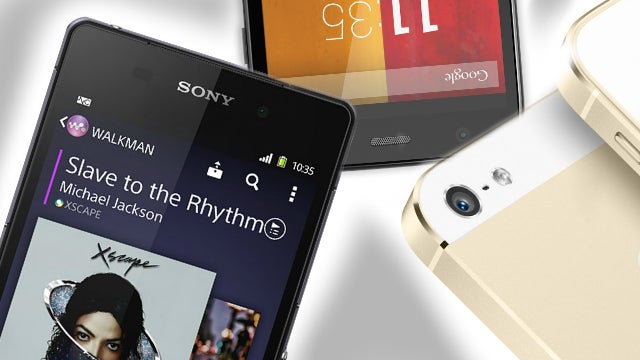
Mobile Phone Buying Guide: 6 Simple Steps to Buying a New Phone
You may upgrade your phone more often than your TV, but buying one is
just as big a commitment. We use our phones virtually all day, every
day. You don’t want to be stuck with a dud.
But do you need
the Samsung Galaxy S5 or would you be perfectly happy with the £80
Motorola Moto E? We’re going to look a bit deeper into the questions you
should ask yourself to find out which phone is right for you.
Our mobile phone buyer’s guide will help you decide:
- Whether to buy on contract or pre-pay
- Which platform and what size phone is best for you
- The features you really need and those you can live without
We’ll be
splitting the buying decision into various stages, so if you’ve already
made up your mind on one, just skip to the next step to find out more.
STEP 1: Contract vs Pre-pay? Which is best for you?
Before
you even start thinking about the phone you should buy, it’s worth
re-considering the different terms you can buy under. Should you opt for
a standard 24-month contract, buying a phone outright and going for a
SIM-free plan, or a low-commitment one-month contract or ‘pay as you go’
deal?
It’s not an easy choice, and you shouldn’t just assume it’s best to carry on with what you’re currently doing. For example, if you like to change your phone often then buying your phone and selling it when you want a new one is better than being locked into a contract. Moreover, contracts aren’t great value when you look at them properly.
Is a contract really good value?
To
demonstrate, we’ll look at the real cost of a contract. One of the main
attractions of a contract is that it subsidises the otherwise-scary
cost of a high-end phone. Mobiles like the iPhone 6, Sony
Xperia Z2 and HTC One M8 can cost up to around £550 on their own, where
there will often be no up-front cost on a higher-end contact.
However,
you need to consider how much the line rental will cost you over the
period of the full contract – usually two years. A £35 a month contract
over two years will cost you £840, and there’s usually no option to
re-negotiate your deal in that time unless you want to spend even more
cash. By contrast, a SIM-only £12 a month deal will cost you just £288
over two years, and you’re often not tied into a long contract. The
difference in cost is the entire cost of a high end phone (£552 to be
exact).
At this point, being a bit commitment-phobic
isn’t too bad an idea, because the roll-out of 4G internet is seeing a
repositioning of how much data we’re getting on our contract deals. And
some of the most generous data-heavy deals are on SIM-only tariffs.
Three
offers ‘all you can eat’ data from just £15 a month, GiffGaff from a
mere £12 a month as part of its zero-commitment Goodybag scheme.
Looking
at what you need to spend to get this sort of data package when a
phone’s part of the deal, we checked out Three’s iPhone 5S contracts. To
get an ‘all you can eat’ data deal, you need to spend £41 a month – a
real high-end contract.
The downside of buying outright, though, is that you
need to, well, buy a phone outright. If that’s going to be an iPhone 6
or Samsung Galaxy S5, it’s a fair old wedge. We’ll be looking into some
more affordable options to buy outright later. The lowest entry-level
option we’d recommend at present is around £80.
 TRUSTED TIP
TRUSTED TIP
Consider networks other than the ones you’ve heard of before. The main
ones are Vodafone, EE (Orange/T-Mobile), O2 and Three, but little guys
like GiffGaff, Tesco Mobile, Virgin and Lyca
Mobile piggy-back on larger networks and often offer great deals.
STEP 2: Decide which platform you want to use
Hopefully you have some idea now whether you want a standard contract, or are
willing to buy a phone outright. There are benefits to each approach.
Next
we need to start looking at the kind of phone we’re after. But we’re
not starting with hardware. Software is actually more important. First
of all, you need to pick a platform.
These days, there are three
main platforms to consider: iOS, Android and Windows Phone. BlackBerry
used to be a contender, but simply isn’t anymore. New BlackBerrys are
rare and we have no faith that the system will continue to be
updated in a significant way.
Which of the big three is right
for you? iOS still offers the best selection of apps and games, but it’s
the priciest of the three. If you want a relatively recent model, the
lowest you can go is an iPhone 5 or iPhone 5C. And they still cost
hundreds of pounds. Unless you buy one that’s scratched to death from
eBay.
![]()
Who has the biggest app store?
In July 2014, Android app store Google Play reached 1.5 million apps.
In June 2014, the Apple App Store hit 1.2 million apps. In August 2014,
Windows Phone’s Marketplace reached 300,000 apps.
With Windows Phone or Android, the
starting cost is far lower. Decent Androids start at £70-80 and the
entry point for Windows Phone is even lower if you opt for the old-but-decent
Lumia 520.
For most people who haven’t bought into the Apple
ecosystem, Android is probably the best all-round system. These days
it’s fairly easy to use, and slick as long as you pick the right phone.
The
specific appeal of Windows Phone, on the other hand, is its style. It has a distinctive
look and feel. Check out our video review of the Nokia Lumia 930 to see
what the last Windows Phone 8.1 version looks like.
Windows
Phone is also more consistent than Android across phones. Android can be
very easy to use, but some manufacturers spoil it with wonky custom
interfaces – they aim to put a maker’s stamp on a phone, but end up
making it worse. There are no such custom interfaces with Windows Phone.
While great to use, Windows Phone doesn’t quite have the apps
and games selection of Android or iOS. There are hundreds of thousands
of bits of software on the Windows Marketplace, but it’s still
poorly-stocked compared with the other big two.
Despite
the figures, iOS is the apps and games winner. Google Play has managed
to surpass Apple in term of sheer number of apps because Google’s
restrictions on letting apps into the store are much more relaxed than
Apple’s. In other words, there’s a lot more rubbish on there.
STEP 3: Decide what size phone you want
Picked a platform? We now need to consider the size of phone you want. Phones are generally getting larger, as shown by the new 4.7-inch iPhone 6 and the 5.5-inch iPhone 6 Plus.
Windows
Phone and Android offer screens from around three inches all the way up
to 6-plus inches. There are also phone-tablet hybrids, which offer call
features in what is essentially a 7-inch tablet.
Why should you buy a 4-inch phone? The smallest smartphones around have around 4-inch screens, and they often some of the cheapest. Phones this small are, predictably enough, perfect for those with smaller hands, or children.
It’s not just about the size of your hands, though. If you’re not keen on apps or games, and don’t regularly browse the web on your phone, there’s often no need to go any larger than this size.
Why should you buy a 5-inch phone? Is bigger better? For
things like 3D gaming and watching films, absolutely. However, there’s
also the more practical day-to-day use to consider. Having used most of
the phones released in the last year, we find that the tipping point is
around five inches.
Most adult-size hands will be able to use
the latest 5-inch phones without too much of an issue (less so with
older models, as they’re thicker and wider), but anything bigger may be
that bit too hard to use for many.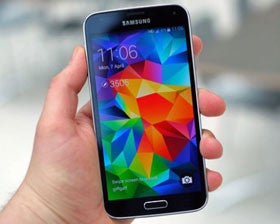
For many people, a phone between 4.5 and 5.1 inches is the perfect combo of portability and a display that’s good for browsing, gaming and more.
Why should you go larger than five inches? A 5-inch screen is by no means the ceiling on size.
You might want to consider an even larger phone if you’ll often want it to essentially double up as a tablet. Like watching TV episodes while you’re at the gym? Or have a long commute you need to fill?
Even if a display isn’t any sharpner, larger size is generally always better in these sorts of situations.
Of course, there is another
option. We find that a 4.5-inch phone plus a low-cost tablet like the
Google Nexus 7 makes a fantastic combo. There are no issues with
handling the phone, and you can have a tablet stashed in your bag for
when you end up stuck on a train for an hour. Low-end tablets generally
have a lot more storage than low-end phones too.
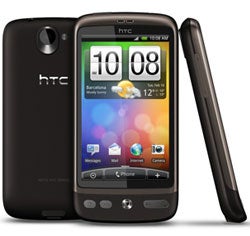 Did you know?
Did you know?
Just a few years ago the top-end phones were smaller than even
entry-level ones of today. 2010’s HTC Desire, the top Android at the time, had a 3.7-inch screen, and
we thought it was massive back then. It just shows you’ll probably get
used to a larger phone in no time.
STEP 4: Decide on features you really need and want
Hopefully,
we’ve given you a few ideas about which phones you should consider
buying. However, before whittling down your final options, you need to make sure your new phone is going to be in-line with your priorities. Here are a few little things to consider, especially if you’re buying on a budget.
Care most about cameras? These days every phone has a camera, but all phone cameras are not equal. Anything but.
To get the best phone camera, make sure it has autofocus or you’ll find it quite limited. If you’re keen on the odd selfie or are buying for a teenager, you’ll make to make sure it has a front-facing camera. Some phones leave this out.
Megapixels tell you the resolution of a camera, not how good it is, but generally speaking most phones cameras of eight megapixels or above are quite good.
Care most about screen quality? If screen quality is your top concern, we recommend making sure your phone has an IPS or OLED display. These are screen technologies that pretty much ensure a fairly good screen experience. These details should be available on the product page of a phone maker’s website.
For a real top-end screen, you’ll want one with at least 1080p resolution. Having a phone with the same resolution as a 50-inch TV used to seem crazy, but now it’s a norm among more expensive phones. These days you only need to spend about £280 to get such a screen, though.
Care most about ease of use? Lets head back to operating systems for a moment. Apple’s iOS is one of the simplest operating systems to use. iPhones are well known for keeping customisability to a minimum but that might not be a bad thing for you. If you like things that work without a lot of faffing around then an iPhone could be right for you. Android has got a lot better but can still be fiddly while Windows Mobiles also offer a reasonably easy user experience.
If you largely just want a phone to be a phone, battery life is key. A phone that lasts longer off a charge is simply easier to live with and if all you do is phone and text then a cheap Nokia feature phone that lasts for weeks on one charge might be right for you. Alternatively Doro offers a range of phones designed with ease of use in mind. their feature phones are good and come with big clear buttons, just steer clear of their current crop of smartphones.
Phone batteries are measured in milliampere-hours, usually displayed as an mAh figure. In a 4-4.5-inch phone look for one with at least 2,000mAh. For a much larger phone, though, you want to get as close to 3,000mAh as you can.
Want a phone that can handle music and films? Other than having a big screen, there’s one thing a phone must have in order to be a real multimedia jukebox – a microSD memory card slot.
Very few phones have enough memory to store a big collection of films, and those that do – like the 128GB iPhone 6 – are usually very expensive.
What should be on your checklist? You can
assume that any smartphone is going to have things like GPS, Bluetooth
and Wi-Fi, but other features are not things you can rely on being in
every phone. Here are the other bits and bobs you might want in your
next phone.  NFC: This is a short-distance wireless
NFC: This is a short-distance wireless
communications standard. It sounds pretty boring, but it can be very
useful. Lots of more recent wireless audio docks and headphones use it
to pair up, before using Bluetooth to transmit audio. You can also use
NFC to buy some items on the high street, using the right app. NFC is
not essential, but it’s a neat extra missing from many cheaper phones. ![]()
 4G:
4G:
The big one to consider is 4G. This is the new (ish) generation of
mobile internet, and its capable of speeds much, much quicker than most
people’s home broadband. In the real world, you’ll see day-to-day speeds
between about 4Mbps and 10Mbps, where the average for 3G is about
2Mbps. Your contract/network deal needs to be 4G capable too, but
there’s actually not that great a premium to pay for 4G phones these
days. And it’s only going to get better. ![]()
 Optical image
Optical image
stabilisation: Phones have really quite small camera sensors – this is
the thing that actually ‘makes’ a camera’s photo. To compensate, some
phones use optical image stabilisation, which helps to improve image
quality in low light. OIS makes a phone much better at taking low-light
photos without the help of a flash. It’s not essential, but it’s worth looking for if you’re camera fan.![]()
 IR transmitter: An IR blaster or transmitter is a wireless
IR transmitter: An IR blaster or transmitter is a wireless
signal sender that uses the same technology as the remote control for
you TV or Blu-ray player. It lets you phone act as a universal remote,
with the help of an app (one usually comes preinstalled in phones with
this feature). It’s more of a ‘nice to have’ than a ‘must have’.![]()
 Fingerprint scanner: A few phones use fingerprint
Fingerprint scanner: A few phones use fingerprint
scanners, letting you take them out of standby without any awkward
passwords. The best fingerprint scanner on the market at present is the
iPhone 5S and iPhone 6. The Samsung Galaxy S5 has a reasonable one too, although
it’s a little more fiddly. ![]()
 Camera flash: If you’re buying quite a
Camera flash: If you’re buying quite a
cheap phone, you need to consider whether you’ll need a camera flash or
not. Some low-cost phones leave this feature out. It’s a must if you
want to take photos of people late at night, especially in a cheaper
phone whose camera isn’t going to be all that great in any conditions. ![]()
 Front
Front
camera: Another sacrifice of some lower-cost phones is a front
camera,
also known as the selfie cam to some. It’s not a feature we personally
find a day-to-day essential, but it certainly is to some. Some recent
phones even offer quite high-quality 5-megapixel front cameras for
super-selfies. ![]()
 microSD card slot:
microSD card slot:
Many phones let you expand their internal storage using a memory card, a
microSD card to be exact. If you want to watch films or use your phone
as a music player, it’s a good idea to get one with expandable memory.
Memory cards are generally much cheaper than buying a phone with more
storage, and capacities go up to 128GB.![]()
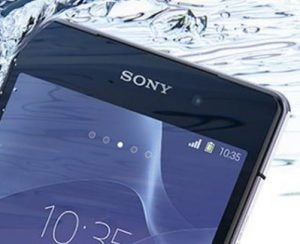 Water resistance: Some phones like the Galaxy S5 or Sony Xperia Z3 offer water and dust resistance up to a certain level. If you like using your phone on the beach or in the bath you might want to consider this feature. Unfortunately its mainly limited to more expensive phones at present.
Water resistance: Some phones like the Galaxy S5 or Sony Xperia Z3 offer water and dust resistance up to a certain level. If you like using your phone on the beach or in the bath you might want to consider this feature. Unfortunately its mainly limited to more expensive phones at present.
STEP 5: Decide on your budget

How
much do you want to spend? You need to spend a lot of money to get an
iPhone, even a second-hand one. If it’s an iPhone you must have, you’re
going to have to forget buying budget.
We also don’t recommend
buying a very old iPhone, such as the iPhone 4 or iPhone 4S. The latest games
often leave out older models like these, which is frustrating, and iOS 8 doesn’t run very well on these older phones. An iPhone 5 or iPhone 5C is the oldest iPhones we’d recommend.
For Android and Windows Phone mobiles, though, there’s a huge breadth of budget choices. Let’s take a look at them.
TrustedReviews Recommends: Budget Phones
Great
budget picks for each system start at between £70 and £80. We recommend
buying these sorts of devices outright, but on a contract you’re
looking at a monthly payment of around £12-13. That’s not too different
to a SIM-only deal, but you’ll generally be tied into a lengthy contract
as usual, and the terms normally aren’t as good.
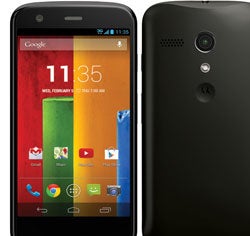 Moto G 4G or Moto G 2: Best Cheap Androids
Moto G 4G or Moto G 2: Best Cheap Androids
£150
Motorola’s budget wonder is our top budget phone. You get
near-vanilla Android, a good processor and a great 4.5-inch screen for a very
attractive price. The camera’s only so-so, but other than that this is a
real star phone. We recommend the 4G version, which costs around £150. If you prefer a larger screen and better camera, also consider the 5-inch Moto G 2. It has 5-inch screen, but it doesn’t have 4G.![]()
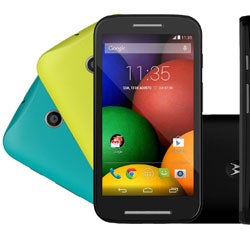 Motorola Moto E: Android For Even Less
Motorola Moto E: Android For Even Less
£80
Motorola
has released an even lower-cost brother to the Moto G, the Moto E. It
costs around £20-30 less, has a smaller, less sharp screen and a worse
camera. But it still gets the basics right enough to earn a hearty
recommendation. It’s the budget phone that shows Sony and Samsung how
low-cost phones should be done. ![]()
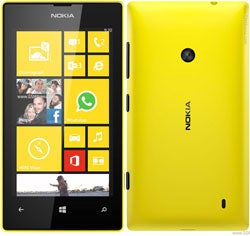 Nokia Lumia 520: Best Cheap Windows Phone
Nokia Lumia 520: Best Cheap Windows Phone
£60
An
oldie but a goodie, the Nokia Lumia 520 can be had for just £60 these
days, and it’s still a good Windows Phone handset. You even get some
features missing from many more expensive budget phones – an IPS screen,
an autofocus camera and a decent amount of storage (8GB). It’s actually better than the Lumia 530 that’s replacing it. Grab it
before it falls off shelves.![]()
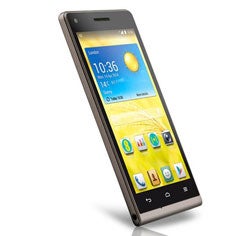 EE Kestrel: Best 4G Phone Under £100
EE Kestrel: Best 4G Phone Under £100
£99
A phone
branded with the name of a network? Quite a few low-cost phones are
positioned like the EE Kestrel. It’s actually made by Huawei. It’s pretty good
too. You get a pretty fast Snapdragon 400 processor, a decent IPS screen
and 4G, all for under £99. The software is a little bit quirky, but
it’s a real bargain.
Read our Best Cheap Phones Round-up for more options
TrustedReviews Recommends: Mid-Range Phones

Want a bit more than you can get from a
true low-cost phone? Spending a bit more will usually get you more
power, a larger screen and a much better camera. If there’s one place
low-end phones generally fail, it’s camera quality.
When looking
at mid-range phones, it’s absolutely worth checking out last year’s
lead mobiles. They’re often available for the same price as this year’s
middle-ground ones, but tend to offer better screens and performance.
For
these phones we’re looking at between £200-300 spend, or around £20 a
month on contract. Here’s where contract phones can be pretty
attractive, getting you a phone that feels high-end without too big a
monthly cost.
New mid-range Windows Phones, such as the Lumia 730 and Lumia 830, are coming soon but we haven’t reviewed them yet.
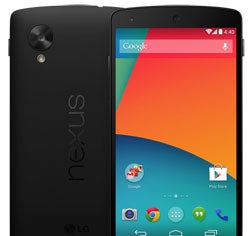 Nexus 5: Best Pure Android Phone
Nexus 5: Best Pure Android Phone
£290
Google’s
Nexus range of phones tends to offer fantastic value for money, as well
as the quickest access to the latest Android updates. The Nexus 5 is still one of
our favourite phones. The 5-inch Full HD screen is fantastic and
performance is great. The camera isn’t fantastic and battery life is not
as good as some, though. Also, if you’re considering it, it’s worth waiting a month or so as a replacement is rumoured.![]()
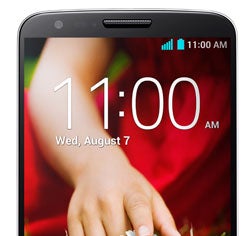 LG G2: Best Nexus 5 Alternative
LG G2: Best Nexus 5 Alternative
£280
LG’s big-hitter
from 2013 is the LG G2. However, as it turned up quite late in the year
it’s not actually that out-of-date, specs-wise. You get a 1080p screen, a
decent 12-megapixel camera and a Snapdragon 800 CPU. Not bad for £280.
What’s wrong with it? You might not love the quirky design, which plonks
the volume and power buttons on the back rather than the side. On the insider it’s basically the same as the Nexus 5, but it has better battery life. The downside is less regular updates. ![]()
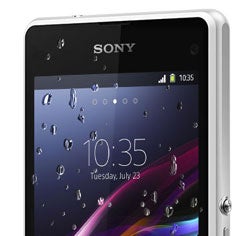 Sony Xperia Z1 Compact: Best 4-inch Android
Sony Xperia Z1 Compact: Best 4-inch Android
£300
When
it was originally released, the Sony Xperia Z1 Compact was a
revelation. At the time it was a phone with real high-end specs, but a
relatively small 4.3-inch screen. No other phone at the time
tried the same trick. We loved it. Fast forward to now and there
are slightly faster phones out there, but the Compact can still spar
with the best. And it has come down in price a bit, making it all the
more attractive. We’d pick it over the more expensive, and newer, Z3 Compact as there isn’t much difference between the two.
Read our Best Android Phones Round-up for more options
TrustedReviews Recommends: Top-End Phones
Have
money to burn? There are plenty of options right up at the top of the
phone market. What you get with these tip-top phones is generally a
better camera, a faster camera and, in most cases, a better screen.
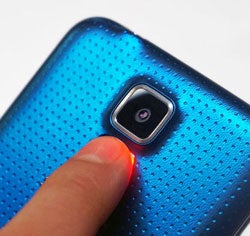 Samsung Galaxy S5: Top Android Phone
Samsung Galaxy S5: Top Android Phone
£450
The
big daddy of the smartphone world, the Samsung Galaxy S5 is a force to
be reckoned with. It has a great 16-megapixel camera, a lovely Full HD
OLED screen and a powerful processor. The design is a bit odd, though,
and the software can cause a little lag despite the super-powered CPU, but it’s still one of the best phones on the market. Also consider the HTC One M8 if you prefer a stylish, metal phone.![]()
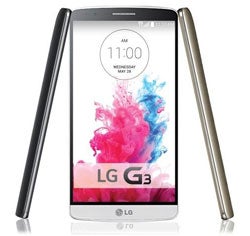 LG G3: A Cheaper Alternative
LG G3: A Cheaper Alternative
£370
LG
has become a master at offering real high-end phones for less cash than
the competition. This is also the first phone we’ve seen with a QHD
screen – that’s the equivalent of four 720p screens stacked together.
The screen is extremely sharp. The camera isn’t quite Galaxy S5-grade,
but it’s still good. ![]()
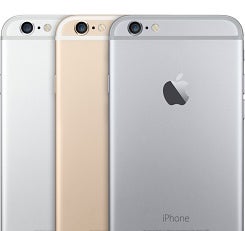 iPhone 6: Our Pick of the iPhones
iPhone 6: Our Pick of the iPhones
£539
The iPhone 6 is not the largest iPhone ever now we have the 5.5-inch iPhone 6 Plus, but its 4.7-inch screen is a big step up from the 4-inch iPhone 5S. The screen isn’t full HD, but it’s still one of the best screens on any phone. Only the OLED screens from Samsung can top it. Improved battery life and a new, curvier design are highlights, but the camera is faster still and performs better in low-light, too. iOS 8 adds loads of useful, new features as well.
![]()
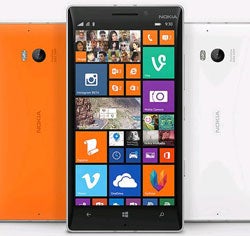 Nokia Lumia 930: The Best of Windows Phone
Nokia Lumia 930: The Best of Windows Phone
£420
Sensibly,
Nokia has made sure its top Windows Phone mobile is a good deal cheaper
than the tip-top Android competition. Windows Phone still doesn’t have
quite the draw of Android. In exchange you get a seriously well-made,
colourful phone with a very accomplished camera. If you’ve fallen in love with Windows Phone, it’s the phone to have.
Read our Best Mobile Phones Round-up for more options
STEP 6: Make a shortlist and find the best deal 
You’ve
picked your platform, chosen a size, decided how much to spend and
found a few features you don’t want to live without. Now it’s time to
make a shortlist.
Have a look at some of our mobile phone
reviews, our mobile phone round-ups, and some of our top suggestions above, and work out a list of
perhaps 2-3 phones that seem to fit the bill. Now it’s time for us to
find a deal.
 When buying SIM-free, you need to shop around just
When buying SIM-free, you need to shop around just
as you would for anything else. Places to check out for good deals
include Carphone Warehouse, Tesco and the online stores for
the major networks. Amazon occasionally offers good prices for the
higher-end phones, too.
Negotiating contracts is a rather more
involved affair. Phone up your current network and tell them you plan on leaving is sure to see them offering you all sorts not to go. And occasionally
you’ll get a better deal than other networks could offer. If you’re
happy with the service, there’s no shame in sticking around.
There
are numerous services online that you can use to compare mobile phone
deals, and places that effectively aggregate mobile deals, too. Try our mobile phone comparison shop to start comparing deals from UK networks.
Other things to consider
How to keep your existing number
If
you decide to switch networks, whether you’re on a contract or not, you
need to get your PAC code in order to keep your number on your new SIM.
You can’t use the same SIM when you switch networks.
To get the
PAC code, get in contact with your network’s customer services
department. Once you have it, you should be able to find an article on
the network you’re switching to on how to keep your number when you
switch to the network.
This is all you really need to worry
about, as your contact information is generally linked to the digital
accounts most of us hold already – email accounts, social networks and
so on.
What size SIM card your phone needs
There are currently three sizes of commonly-used SIM cards. If you’re a long-term mobile user, the one you started with is probably not the most common one today.
Most new phones use microSIMs, while a handful including the iPhone 6 use the even smaller nanoSIM type. Only a few very low-cost phones use full-size SIMs these days. If you need to get hold of a new SIM, just get in contact with your phone network. They’ll usually be able to supply one for free.
Finally, learn how to use your new phone
Want to know more of the advanced features of your new phone? Here are a few of our tutorial articles you should consider checking out.
Android Tips and Tricks Tips for using Android phones
iOS 8 Tips, Tricks and Secrets Get to know Apple’s new phone operating system
Enjoyed this guide? Read our New TV Buying Guide


